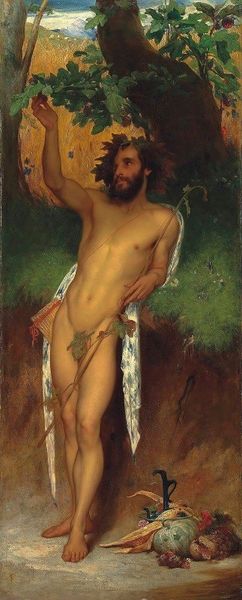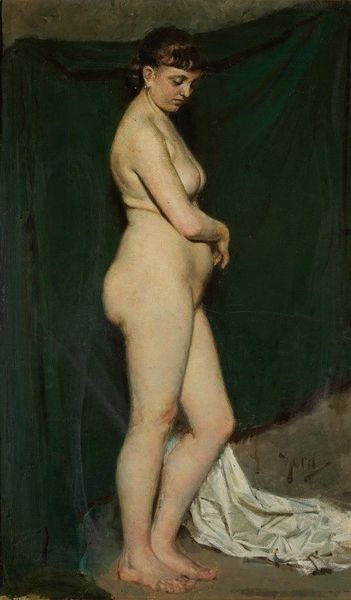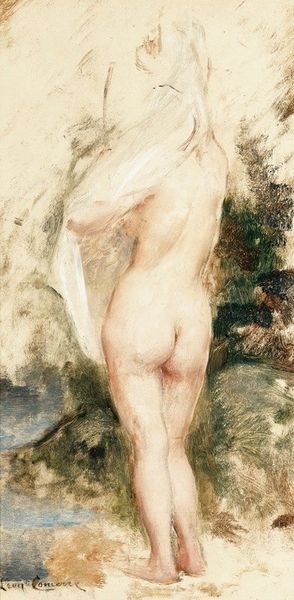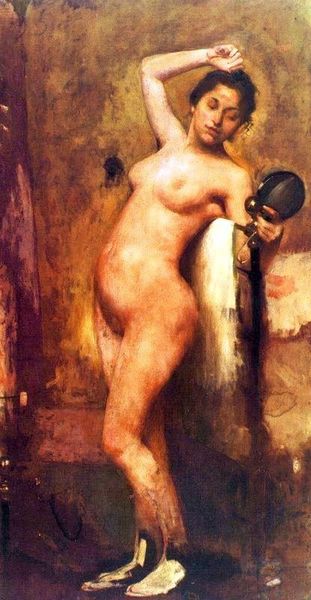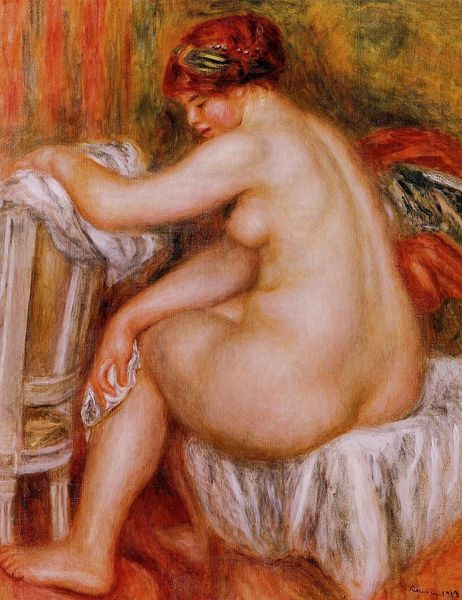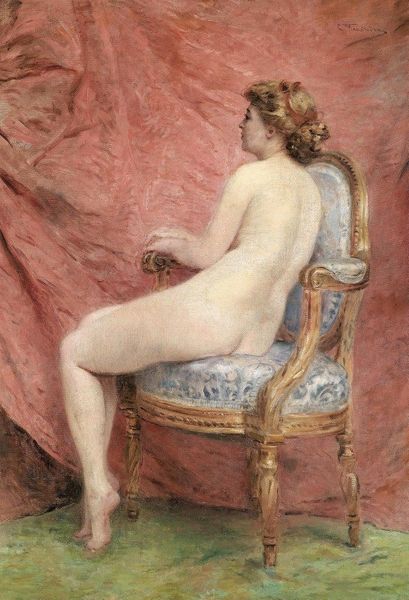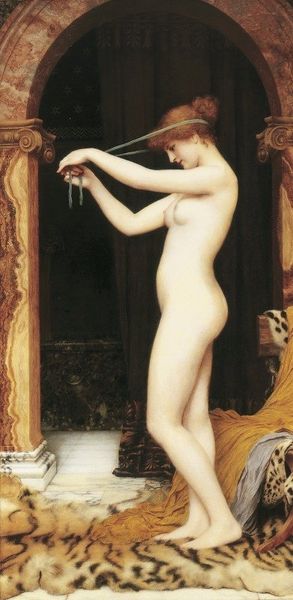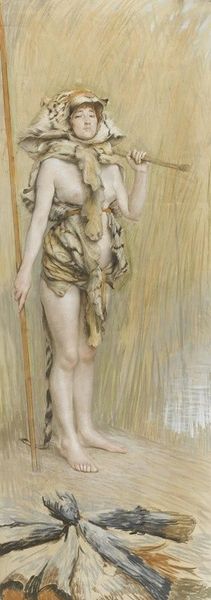
painting, oil-paint
#
portrait
#
painting
#
oil-paint
#
oil painting
#
expressionism
#
mythology
#
symbolism
#
genre-painting
#
nude
#
portrait art
#
erotic-art
Copyright: Public Domain: Artvee
Curator: Lovis Corinth’s 1913 painting, "Bacchantin," strikes me as an unapologetic celebration of the female form, filtered through a lens of classical mythology and… frankly, a boisterous eroticism. Editor: It's the light for me. See how Corinth bathes the figure in this diffuse, almost ethereal glow? It softens the contours, almost obscuring the physicality, even while emphasizing the sensuality. Note the composition too, it’s almost as if the artist wants us to celebrate the forms here. Curator: Yes, and to me, the eroticism in Corinth's oeuvre is interesting. He doesn't shy away from portraying the nude female figure as anything other than desiring and agentic. The bacchant represents female agency through its deep connection to classical representations of Bacchus who offers freedom from oppression for all people. Corinth challenges the historical narratives, creating one where these forms can express and be desired in many different contexts. Editor: But even if we strip away the mythological references, or the political implications, we are still left with its surface: Corinth’s command of the oil paint is striking, you know. There's this raw, almost visceral quality to his brushstrokes, this immediate energy, which he uses to bring out the character and create the sensual dynamism. Curator: I see that immediacy as reflective of Expressionism at the time and the painting's ties to socio-cultural contexts surrounding the Die Brucke movement, which actively challenged the status quo and gave prominence to formerly under-represented individuals and pushed against accepted notions of beauty. Editor: But the structure provides balance too! Look how the dark clusters of grapes anchor the bottom of the painting, leading the eye upwards towards the central figure and balancing that out with the pale backdrop and the subtle gradation of light. Curator: Placing this painting in conversation with turn-of-the-century anxieties regarding female sexuality allows us to view "Bacchantin" not merely as an erotic display, but as an examination and potentially even a defiant statement about womanhood outside of strict patriarchal codes. Editor: Precisely. What strikes me most profoundly about Corinth’s Bacchantin is its bold structural juxtapositions – its sensual celebration that really pushes its themes through this dynamic yet measured aesthetic experience. Curator: I couldn't agree more and as such, in our discussion it strikes me how it showcases the intersection between form and content, allowing us to see this portrait not just as beautiful but meaningfully engaging, prompting considerations of social norms, the depiction of gender, and the liberation of the individual.
Comments
No comments
Be the first to comment and join the conversation on the ultimate creative platform.

